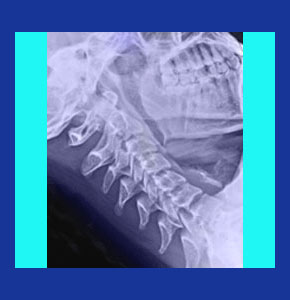
Facet joint neck pain is one of the various arthritic diagnoses often related to the normal and expected degenerative processes which act on the cervical spine, and virtually the entire backbone, in general. There are many names for this condition, including facet syndrome, facet joint syndrome, facet joint pain, facet arthrosis, facet arthritis or facet degeneration. They all describe a condition in which the osteoarthritic processes deteriorate the spinal facet joints, potentially sourcing neck pain symptoms in some unfortunate patients.
This resource section provides an overview of the facet syndrome diagnosis, including what causes facet joint deterioration, the types of symptoms it may produce and the most effective treatment choices.
Focus on Facet Joint Neck Pain
Here are a few articles which detail the condition of facet degeneration as it may relate to neck ache:
Cervical facet syndrome is one way of diagnosing pain primarily thought to exist due to the break down of the spinal facets in the neck.
Cervical facet joint pain describes symptoms which exist localized in the neck, and sometimes in the upper back, related to facet degeneration.
Cervical facet arthrosis is another diagnostic term pointing to the arthritic source of facet joint breakdown.
You can focus your research on facet joint pain on our niche web resource, Facet-Joint-Pain.Com. This site only details facet joint conditions and is the best place to find help for any spinal joint pathology.
Facet Joint Pain Facts
The spinal facet joints, also called apophyseal or zygapophysial joints, are synovial joints found throughout the backbone. These areas link the individual vertebral bones to one another, with each connecting to the bone above and below.
Facet joints are covered in cartilage and are filled with synovial fluid. Just like in other major joints, the arthritic processes work to strip the cartilage and dehydrate the joint of its lubricating fluid, causing bone on bone contact and the eventual formation of osteophytes and related arthritic debris. In most scenarios, this process will not produce any significant symptoms, but in a few patients, large bone spurs can form in areas which might produce pain. This represents the exception, not the rule, and most people diagnosed with facet joint arthritis should not expect to suffer any considerable amount from the normal and virtually universal changes in their spinal anatomies.
Facet Joint Neck Pain Guidance
Facet joint syndrome is a diagnosis on the rise, since procedures which basically utilize (un)educated guessing have become accepted diagnostic and treatment protocols in the dorsopathy sector. Most facet joint concerns are diagnosed via anesthetic injection. If the pain stops after an anesthetic is injected, then the facet joint must be responsible right? Wrong. This is one of the worst ways of diagnosing any type of spinal problem, since it is simply a process of elimination and does not account for the fact that the anesthetic affects many tissues in the area.
In my experience, many people who are diagnosed with facet joint pain have symptoms which are far too diverse and wide ranging to possibly come from the theorized source. This is why I always advise facet syndrome sufferers to reconsider the validity of the diagnostic theory if they have not been able to find lasting pain relief, despite an extensive history of seemingly indicated neck pain treatment practices. Getting a second or third diagnostic opinion certainly would not hurt in these circumstances.
Neck Pain > Facet Joint Neck Pain




